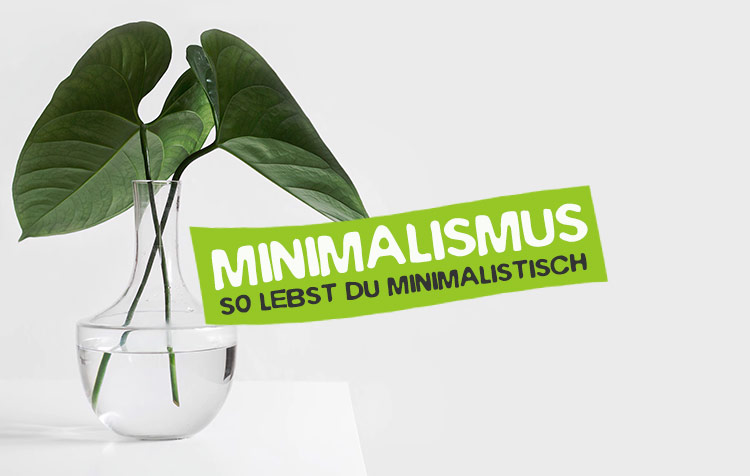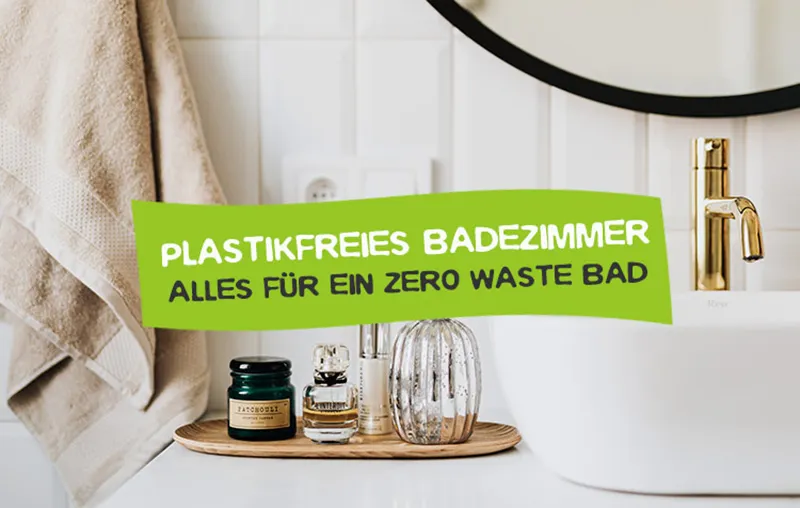You want to renovate your house or apartment sustainably? Then you've come to the right place! Whether in new or old buildings, whether in the bathroom, bedroom or kitchen - every now and then one or the other beauty repair is necessary in your own four walls. From the proverbial change of wallpaper, to moving furniture and painting, to lighting and new flooring.
But renovation is usually not particularly environmentally friendly, because conventional paints contain chemical solvents, a lot of new products are bought that have traveled the world - or because there is generally a lot of waste. Fortunately, there are ways and means to make one's own, preferably sustainable lifestyle, even when painting, wallpapering and laying floors.
In this article, I would like to give you the most valuable tips and tricks for an ecological, sustainable renovation. Let's go!
Here you can find a short overview in advance:
- Target-oriented planning and preparation
- Purchase necessary material on site
- Pay attention to seals and certifications
- Prefer natural colors
- Use wallpaper from recycled material
- Select durable, low-pollutant floors
- Ensure optimal lighting with LEDs
- Consider second hand goods for new furnishings
- Give old furniture a new look with foils
- Dispose of renovation waste properly
Important Notice: This article is all about sustainable renovation, i.e. cosmetic repairs. Necessary repair work (refurbishment), as well as structural, contemporary measures to increase value (modernization) are not included.
Advantages: Why renovate sustainably at all?
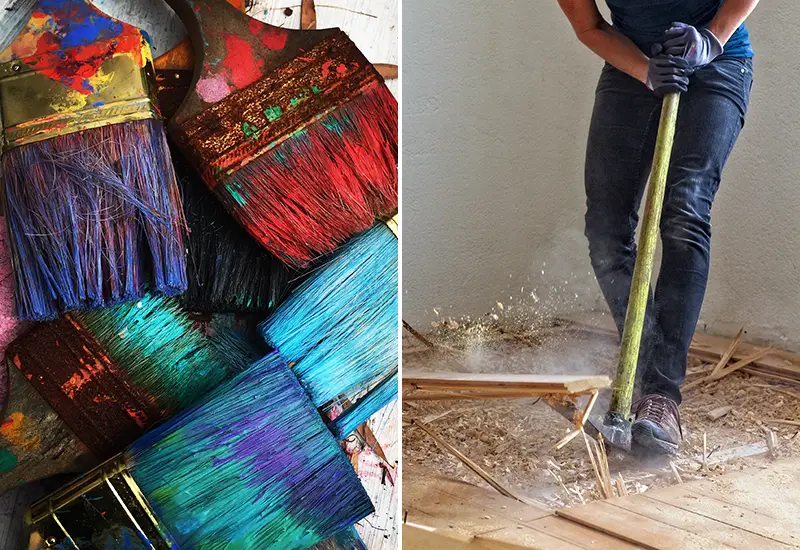
What are the benefits of sustainable renovation? Why should I even consider sustainability when choosing wallpaper, paint, lighting or flooring?
Among other things, the necessary motivation is provided by the following reasons and advantagesYou should know all of these in advance in order to be able to carry out your project:
- Resource conservation: During a renovation, old wallpaper, flooring and walls, among other things, create a lot of waste. Chemical paints, plastic buckets, painter's rollers, masking film and adhesive tape create additional waste. More than half of the waste in western industrialized countries like Germany, is generated in the building sector.₁
- Save money: Some materials require one or two more work steps, which is why they are often available at a lower price. There are also government subsidies for cosmetic repairs in combination with refurbishment or modernization measures - and additional savings opportunities through greater energy efficiency.
- Climate protection: Energy-intensive manufacturing processes, transportation halfway around the world, the use of chemical pollutants - almost forty percent of the greenhouse gases emitted globally come from the construction and operation of buildings.₂ If you want to protect the air, water, atmosphere, and natural Conserve the earth's resources wants, renovates environmentally friendly.
- Area protection: Renovating old rooms or entire buildings also helps to make the most of existing space and avoid resource-intensive new construction.
- Health & Living Experience: Sustainable renovation with natural materials without harmful substances provides not only an ecological, but also a healthy living environment. In addition, you feel more comfortable, because you can plan the renovation according to your own wishes.
Environmentally friendly renovation: 10 tips that everyone should consider when making cosmetic repairs to the apartment and house.
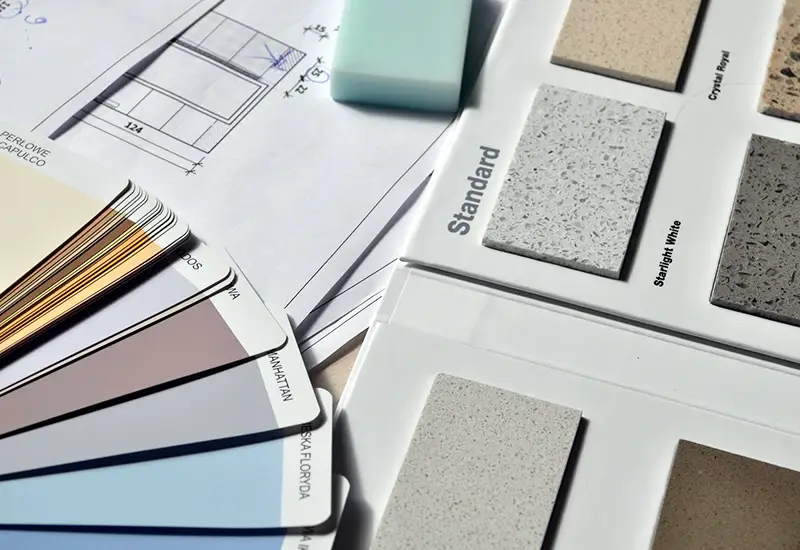
Over the years, wear and tear and ordinary use leave unsightly marks on an apartment or house. With targeted cosmetic repairs, these problem areas can be fortunately mostly fix themselves and beautify their own living environment again - and in an environmentally friendly way.
Just use the following tips for more sustainability in your upcoming renovations.
1. target-oriented planning and preparation
First of all, by doing some research (which you are doing right now) and good planning, you are already laying the groundwork for an environmentally friendly implementation of your renovations.
You should know exactly what you wantYou need to know what materials you need and in what quantities they must be available. Make sure you choose the colors, wallpapers and floors you really like, so that you don't have to change them again in the near future.
In addition, you should always pay attention to the renovation work, no damage to the skin. It is also recommended to wear Garments, which you can spare and put on again and again for crafts or DIY projects.
So think and plan ahead and, if possible, decide on a timeless designthat will give you pleasure for a long time.
2. purchase necessary material on site
Even those who want to renovate a room sustainably need paints, wallpaper, paste, brushes, paint rollers, paint tubs, foils, buckets, wallpapering tables, adhesive tape, cutter knives and, last but not least, furnishings such as lamps and furniture.
In order to conserve the earth's natural resources and protect your ecological footprint as small as possible to keep, it's best to get all of these things as locally as possible. Some you can borrow from neighbor:inside and other used on the flea market or just buy new from the retailer and wholesaler near you.
In this way you support the people around you, refer to Strictly controlled goods and you also avoid long, climate-damaging Transport routes.
3. pay attention to seals and certifications
Meanwhile, there are thousands of different colors, wallpapers and floor coverings, so you can quickly lose track.
Fortunately, in the most environmentally conscious choice in the hardware store help some, reliable environmental seals. For example, be on the lookout for the following certifications:
- Blue Angel: According to strict criteria, the seal tests the health safety and environmental friendliness of building materials. You'll find it on many wall paints, wallpapers, upholstered furniture and floor coverings.
- TÜV-Nord: Also the TÜV North GmbH & Co.KG tests wallpaper for pollutant content and allergens, among other things - and equips products that improve indoor air with the company's own seal.
- FSC: The seal distinguishes wood from sustainably managed forests. For example, flooring, wallpaper or even renovation materials such as adhesive tape.
- EU Eco Label: You can recognize both sustainable furniture and environmentally friendly flooring, as well as paints and glazes, by the well-known European Ecolabel.
- natureplus label: The environmental seal distinguishes building products that are harmless to health and environmentally compatible, such as flooring, paints, wallpaper, adhesives, but also sustainable insulation materials off.
- eco-Institut label: Paints, varnishes, flooring, furniture and wallpaper with this label are also safe for health.
- PEFC: This seal stands for sustainable wood products, such as flooring, wallpaper or tables.
4. prefer natural colors
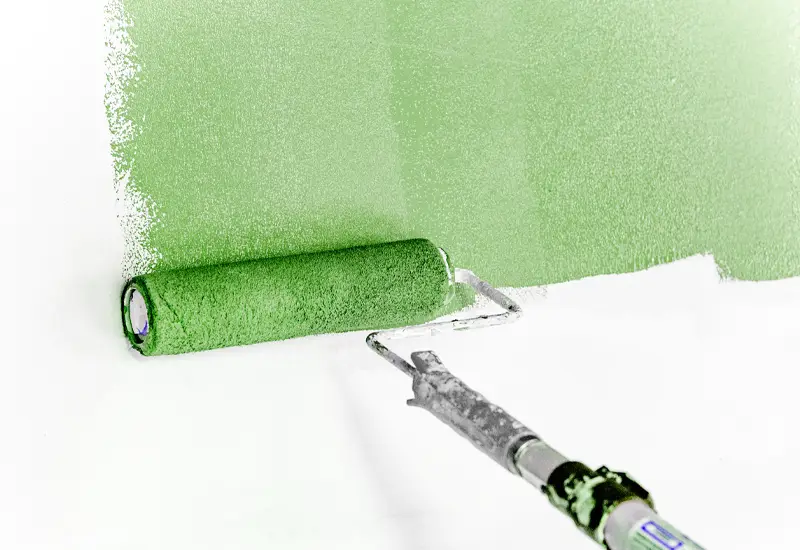
Away from environmental labels such as the "Blue Angel", the "European Eco-Label" or the "natureplus-Label", you should attach great importance to the following when renovating ecologically natural composite colors lay
Basically, the simpler and more natural the ingredients, the more sustainable the paint. So there should be no synthetic and non-biodegradable substances such as petroleum, as well as chemical preservatives and solvents in a paint.
Environmentally friendly are especially water-based wall paints with so-called pot preservatives, which serve to protect paints stored in containers from microbial damage.₃.
Also Clay paint (consists of clay powder, plant starch and natural cellulose) is extremely environmentally friendly and not least beneficial to the living environment. Since it is only mixed with water before use, it is even available in a paper bag and saves the plastic bucket.
Another ecological natural powder-based paint is Lime paintwhich only really covers after drying, but among other things is ideal against mold growth.
Tip: The selection of environmentally friendly paints for renovation work is quite large. If you are unsure, you should always seek expert advice at the DIY store.
5. use wallpaper from recycled material
Also in the choice of your wallpaper show you the "Blue Angel" or also the "FSC Seal" and the "natureplus label" the way to an environmentally friendly decision.
Finally, they should also be free of harmful substances (such as chlorine or PVC). Particularly environmentally friendly are robust Woodchip wallpaper from recycled waste paperwhich, unlike vinyl wallpaper, can be repainted several times and are also better for the indoor climate.
At Wallpaper paste you should use products based on methyl cellulose, which are free of fungicides, preservatives and synthetic resin.
6. select durable, low-pollutant floors
For environmental and health reasons you should do without PVC floorsif you want to renovate your apartment or house in a sustainable way.
Healthy and sustainable flooring are basically hard-wearing, easy to clean, durable, from renewable sources manufactured, timeless in design and later Easy to dispose of and recycle. Environmental seals such as the "eco-Institut label", the "natureplus label", the "PEFC seal" or the "Blue Angel", for example, make it easier for you to choose from Real wood floors or low-emission Cork floors much easier.
Particularly sustainable are recycled soils or also the use of used parquet floors and wooden panelswith whose acquisition you also still save money in a sustainable way simply by following your heart.
7. provide the optimal lighting with LEDs
If you want to renovate sustainably, you should also plan the lighting to be as energy-efficient as possible. Bright walls and natural light sources make many a lamp superfluous, for example.
You should buy your interior lights used if possible and with LED light bulbs which emit less heat and are therefore more efficient in the Energy Saving help
8. take into account second hand goods when refurnishing.
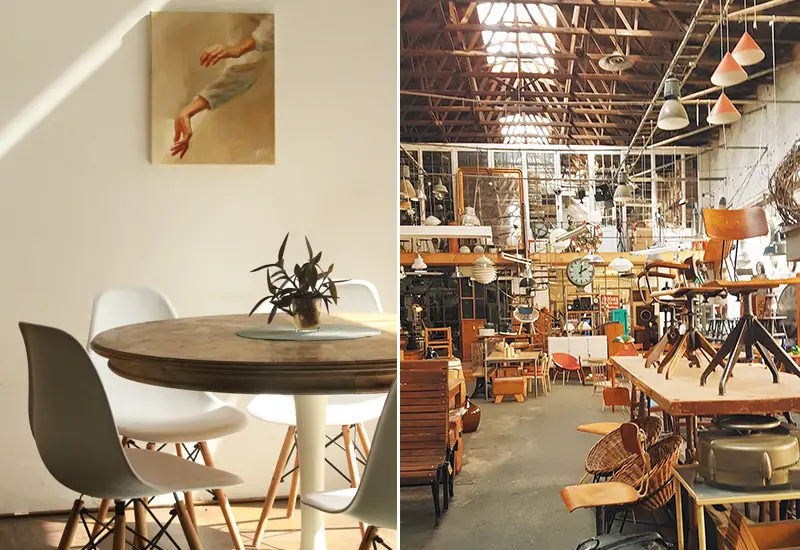
That we think we have to buy everything new all the time, plays an essential role in the existence of many, the biggest environmental problems of our time. At the same time used items are also particularly suitable for redecorating rooms - they are even as a rule, cheaper, more individual, higher quality, healthier, more socially and also more environmentally friendly.. The Advantages of Second Hand are obvious.
For your next renovation project, for example, try using unique Furniture and lamps, cheap Wallpaper tables or useful Buckets and paint tubs buy used or even get them for free altogether.
Tip: You can also build your own furniture and upcycle it from existing materials. I have for example my Dining table from old oak planks built by yourself. Feel free to check out the related blog post.
9. give old furniture a new look with foils
Ideally, your furnishings will be timeless, so that they will please you and any potential subsequent owner:s forever, if possible. However, if a smooth surface, such as a Wall unit, by Dining table or a Kitchen frontIf your furniture is visually outdated, you can still cover it with modern furniture foils.
Thereby you have enjoy it again and can do the At the same time, continue to use the material for as long as possible. The films are available, for example, in deceptively real wood and stone look, but also in all desired colors.
10. properly dispose of renovation waste
Waste cannot be completely avoided during a renovation. So if you want to renovate sustainably, you should also think about the future.
Waste is generated, for example, by cutting wallpaper, flooring or the adhesive tape used during painting work. But above all, by old wallpaper, floorboards, tiles or baseboards, which you want to remove and replace during a renovation.
Here is a small overview for you, how to dispose of such leftovers as a rule:
- Tile remnants: Tiles are construction waste and must be disposed of by container service or by yourself at the recycling center.
- Wallpaper remnants, paste and dried wall paint: You can dispose of them all in the household waste garbage can.
- PVC and vinyl floors: Dispose of unusable remains of the floor at the recycling center. If there are whole planks left over, be sure to save them.
- Paint and varnish residues, thinners and cleaners: You must take this renovation waste to the municipal hazardous waste collection points or hand it in at the local hazardous waste mobile. However, well-sealed paints can be kept for a good year. Keep them in case you need to repaint a spot or two.
- Empty paint buckets and cans: You can reuse them for anything. When they are broken, you dispose of them correctly in the yellow bag.
- Covering foil and adhesive tape: Dispose of both with household or residual waste.
- Used paint rollers and brushes: Normally they can be reused a few more times - after that they belong in the residual waste.
Frequently asked questions about renovation
What is the difference between renovation, redevelopment, modernization and restoration?
A renovation describes cosmetic repairs in a room that are not mandatory.
A refurbishment is understood to be necessary repair work. A modernization is a structural, contemporary measure to increase the value of a property and a restoration is the restoration of an old condition of cultural assets.
What all do I need to renovate?
What you need for the renovation work, of course, depends on the project. Common, in addition to the necessary materials such as wall paint, flooring and wallpaper, are mainly protective goggles and gloves, a wallpaper table, plaster compound, a cordless drill, a cutter knife, a folding rule, tape and painter's fleece.
What all counts as renovation?
Basically, renovations are cosmetic repairs to a property. This includes, for example, painting the walls, wallpapering and laying or sanding the floor.
Sustainable renovation made easy!
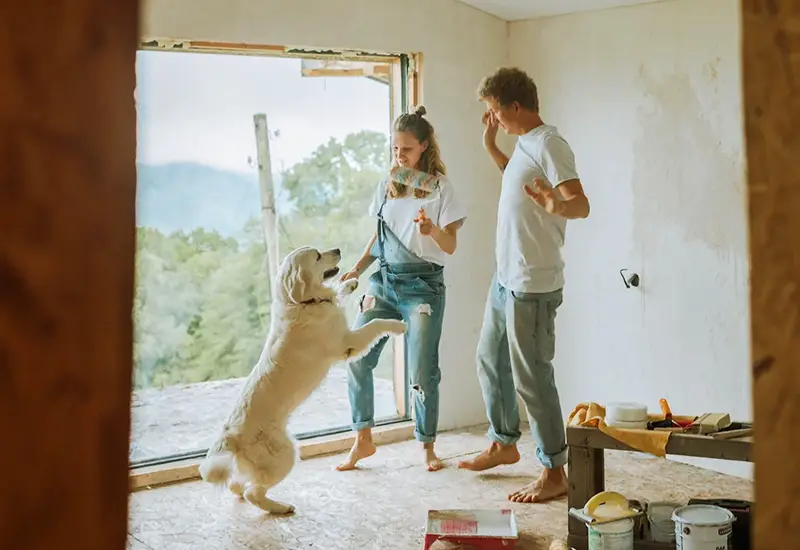
Now you know that even when renovating, you have an incredible amount of levers to positively change both your home and your ecological actions. A good planning and preparation provides the basis For this. Natural paints, recycled wallpaper, durable flooring, buying locally, preference for second-hand furnishings and also the proper disposal of the resulting renovation waste all play a crucial role.
"They always say time changes things, but you actually have to change them yourself."
Andy Warhol (more at Change quotes)
When remodeling and decorating your home or property, also opt for a timeless design so that your enjoyment of it lasts as long as possible and you don't have to renovate at all. Because as long as it is only cosmetic repairs without essential necessity, is the most sustainable renovation definitely the one that does not take place at all.
Do you have any questions, suggestions or other tips for an environmentally friendly renovation? Then I look forward to your comments and, of course, one or two before-and-after comparisons 🙂
Stay sustainable,

PS: If you have a whole Build house in a sustainable way you will now find the appropriate tips in the linked blog article!
References:
₁,₂ Bund für Umwelt und Naturschutz Deutschland e.V. (BUND): Ökologisch Bauen & Renovieren 2022 (reading sample, as of Feb. 14, 2022), available at https://www.bund.net/fileadmin/user_upload_bund/publikationen/bund/bund_bauen_und_renovieren_2022_leseprobe.p.pdf. [08.02.2023].
₃ Federal Environment Agency: pot preservative (as of 08.04.2019), available at https://www.umweltbundesamt.de/topfkonservierer#gesetzliche-einschrankungen. [08.02.2023].

